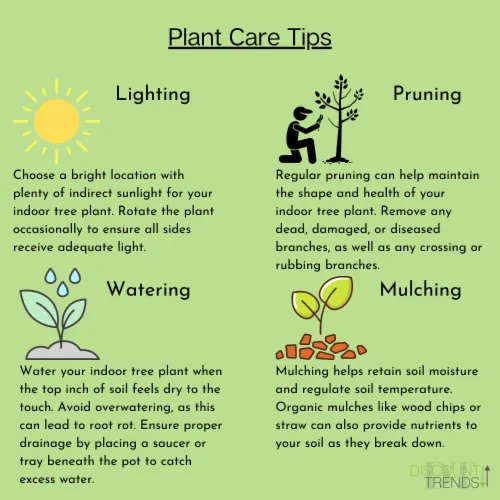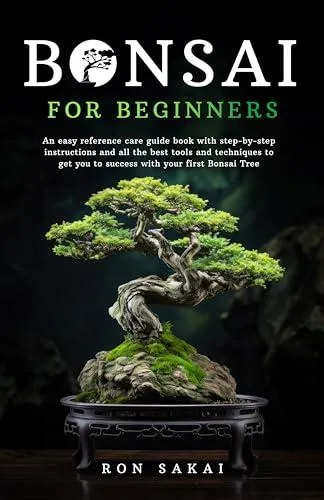A Guide to Choosing and Caring for Indoor Plants and Trees
Whether you’re looking to bring a touch of nature inside or simply want something living to brighten up your space, indoor plants can be a great addition to any home or office. However, with so many options to choose from, it’s easy to feel overwhelmed by the selection. In this guide, I’ll break down the most popular houseplant varieties and trees, the conditions each prefers, and tips for keeping them healthy and thriving. By the end, you’ll be well-equipped to select plants that suit your environment and care needs.
Determining the Best Plant for Your Space
The first step is evaluating your indoor space. Take stock of factors like available sunlight, temperature, and humidity levels. From my experience as an avid plant parent, these will have a big impact on what species can realistically survive where you plan to put them.
If light levels are low, stick with plants adapted to low-light conditions like pothos, snake plants, or Chinese evergreens. Areas with bright, indirect sunlight open up options like spider plants, peace lilies, and dieffenbachia. Direct sun near south-facing windows is perfect for plants like succulents, philodendrons, and fiddle leaf figs.
Temperature also matters. Tropical plants need temperatures above 60°F, while others suited to indoor conditions tolerate 50-80°F. Plants from warmer climates may struggle in drafty or air-conditioned homes.
Top Indoor Plant Picks by Light and Care Preferences
-
Low light:
- Spider plant
- Snake plant
- Chinese evergreen
- Pothos
-
Medium light:
- Peace lily
- Dieffenbachia
- Philodendron
- Chinese money plant
-
Bright light:
- Succulents
- Fiddle leaf fig
- Rubber plant
- Dracaena
No matter your conditions, there are houseplants suited to thrive. The key is finding a good fit between plant needs and your indoor environment.

Indoor Tree Options
While trees are typically thought of as outdoor plants, some small varieties can adapt well to indoor growing too. Here are some top tree picks:
- Dwarf date palm: Sturdy and tropical-looking, this palm tolerates low light and moderate watering.
- Weeping fig: With cascading green leaves, this is kind of like having a indoor hanging garden! Needs medium light.
- Dwarf lemon tree: Grow your own mini citrus indoors. Give it bright light and keep soil slightly dry between waterings.
- Dwarf umbrella tree: Beautiful dark foliage that thrives in medium to bright spots. Can get pretty huge over time, so give it space.
All of these stay quite small, maxing out under 10 feet tall indoors. With care, trees add major visual impact to any room.
Caring for Your Plants
Once you’ve selected plants suited to your conditions, proper care is key to keeping them healthy. Water is arguably the most important factor.
The general rule is to water when the top 1-2 inches of soil are dry, but frequency depends on the plant – some prefer to dry out more between waterings than others. Stick your finger in the soil to get a sense of moisture levels beneath the surface.
Consistency is also crucial. Drastic fluctuations in moisture can cause drooping leaves or leaf drop. For trees, aim to water just until water drains freely from the bottom of the pot.

Plants also need fertilizer during their growing season, which is spring through fall for most indoor varieties. A balanced, all-purpose formula works for general use every few months.
Pruning is another regular task. Pinched back new growth to encourage bushiness in some plants. Trim off any wilted or discolored foliage as needed to maintain appearance.
Lastly, watch for signs of pests and address them promptly before an infestation takes hold. Early detection and treatment is key to keeping plants bug-free.
From my experiences as an avid plant parent, following these basic care steps is usually all that’s needed to facilitate healthy growth indoors. The rewards of fresh air purification and an instant pick-me-up more than make up for any extra effort!
Dealing With Inevitable Plant Problems
No matter how diligent your care, problems may still arise. But don’t panic – with the right diagnosis, most issues have solutions.

Yellow or brown leaf tips often mean pH imbalance from tap water. Try using filtered, distilled, or rain water instead for sensitive plants like calatheas.
Brown edges or spots could indicate overwatering or underwatering; adjust watering frequency accordingly. Check for root rot if leaves suddenly wilt.
Pests are more common indoors too. Look closely for webbing, ants, gnats, or tiny bugs and immediately isolate any infested plants. Bonide products or a homemade remedy based on dish soap work well.
Browning or curling leaves may signal too much direct sun or heat near a warm vent. Move the plant to a more consistent spot out of direct rays.
The key is not getting discouraged! With observation skills and quick responses, plants can bounce back from all kinds of indoor tribulations. I’ve had my fair share of close calls, but it’s kind of fun to problem-solve, right?

Hopefully this guide has equipped you to choose low-maintenance plants perfectly suited for your home. Whether you go for a classic philodendron or dare to try a rare calathea, I’m sure you’ll look forward to your daily moments nurturing a leafy friend indoors. Once hooked, the options for greening up your space become truly endless! Feel free to reach out if you need any other plant parenting tips.
Factors to Consider When Choosing an Indoor Plant
| Plant | Light Needs | Water Needs | Size | Care Level |
|---|---|---|---|---|
| Snake plant | Low | Let dry between waterings | Tall, upright leaves | Easy |
| Pothos | Low to medium | Let dry between waterings | Vining plant | Easy |
| Chinese evergreen | Medium | Let soil partially dry | Bushy plant, different leaf shapes | Moderate |
| Peace lily | Medium | Let dry slightly before watering | Prefers humid air, delicate white flowers | Moderate |
| Chinese money plant | Medium to bright | Let dry slightly before watering | Cascading stems, oval leaves | Easy |
FAQ
- What kinds of indoor plants grow well? Some indoor plants that basically do pretty well are pothos, snake plants, zz plants, spider plants or Peace Lilies. They can survive around the house without a ton of sunlight.
- How much sunlight do indoor plants need? Most indoor plants need at least some sunlight each day to survive. However, too much direct sun can scorch their leaves. It’s best to put plants in areas that get morning sun or indirect sunlight throughout the day. Maybe try moving plants gradually into brighter light.
- How often should I water indoor plants? The timing can truly vary a lot based on the plant type and indoor conditions. As a general guideline, small plants may need water every 5-7 days while larger potted plants could go almost 2 weeks. Stick your finger in the soil and water when the top inch feels dry. Is that a good way to check?
- What’s the best potting mix for indoor plants? Most indoor plant potting mixes contain peat moss or coconut coir to retain water well. Look for a blend that’s light and well-draining so the roots don’t get soggy. You could also try adding perlite or vermiculite to regular potting soil to lighten it up and improve drainage. Does anyone have experience mixing their own potting soil?
- How do I get rid of brown leaf tips on plants? Brown leaf tips are commonly due to dry air or watering issues. Grouping plants together can help hold in moisture. You might also try using a pebble tray – fill the bottom of the container with pebbles and water to increase humidity around the plant. Perhaps a humidifier could assist as well? Let me know if those tips help resolve browning.
- What’s the best way to propagate plant cuttings? Cuttings root best in a humidity dome or clear plastic bag. Remove leaves from the bottom half of the stem and place the cutting in moist potting mix or water. Change the water every few days. Keep the soil or water moist and soon you’ll see new growth! Isn’t it amazing how easy it is to grow full plants from tiny cuttings?
- My indoor tree looks leggy. How can I improve its shape? A leggy-looking tree may need more light or pruning. Try moving it to a sunnier spot and trimming off the top 4-6 inches to encourage bushier growth from the remaining stems. You could also stake the tree to hold it upright until it develops a stronger trunk. With some TLC it should regain a fuller appearance before long.
